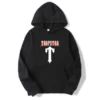In today’s world, sustainability has become a significant concern for many parents. As awareness grows about the impact of consumer choices on the environment, the demand for eco-friendly products, particularly baby clothing, has surged. Parents are increasingly seeking out brands that prioritize sustainability, ethical production, and the health of their children. This shift reflects a broader trend towards conscious consumerism, where individuals are more informed about the consequences of their purchasing decisions.
In this guide, we aim to help you navigate the world of sustainable baby clothing, ensuring that your choices are both stylish and environmentally responsible. By understanding the importance of sustainable materials and ethical practices, you can make informed decisions that align with your values and contribute to a healthier planet for future generations. Embracing sustainable baby clothing not only benefits your child but also promotes a positive change in the fashion industry as a whole.
Understanding Sustainable Baby Clothing
Sustainable baby clothing refers to garments made from eco-friendly materials and produced through ethical practices. These clothes prioritize the planet’s health, aiming to reduce waste and pollution. When selecting baby clothing, parents should consider the fabric, production methods, and the lifecycle of the garments.
Organic cotton is a popular choice for sustainable baby clothing. It is grown without harmful pesticides, making it safer for both your baby and the environment. Another option is bamboo fabric, which is biodegradable and requires less water than conventional cotton. These materials not only minimize environmental impact but also provide comfort for delicate baby skin.
In addition to fabric, consider the production processes of the brands you choose. Look for companies that prioritize ethical labor practices. Brands committed to fair trade ensure that workers are paid fairly and work in safe conditions. By supporting these businesses, you are contributing to a more equitable global economy while providing your child with quality baby clothing.
Benefits of Choosing Eco-Conscious Baby Clothing
Opting for sustainable baby clothing has numerous benefits. First and foremost, it contributes to a healthier planet. Traditional clothing production often involves harmful chemicals and processes that pollute air and water. By choosing eco-friendly options, parents can reduce their environmental footprint.
Additionally, sustainable baby clothing is often more durable than fast fashion alternatives. While the initial cost may be higher, the longevity of these garments means fewer replacements. This not only saves money in the long run but also reduces waste in landfills. Investing in quality baby clothing made from sustainable materials ensures that your child has clothing that can withstand wear and tear.
Another advantage of eco-conscious baby clothing is the peace of mind it provides. Parents can feel good about the choices they make, knowing they are protecting their child’s health and the environment. Sustainable clothing options often avoid harsh dyes and chemicals, making them gentler on sensitive skin. This is especially important for babies who are prone to rashes and allergies.
Finding Sustainable Brands
The market for sustainable baby clothing has expanded significantly in recent years. Many brands now focus on creating eco-friendly garments, making it easier for parents to find suitable options. When searching for sustainable baby clothing, consider the following tips:.
Start by researching brands that align with your values. Look for companies that prioritize sustainability, transparency, and ethical practices. Websites often provide detailed information about their sourcing, production methods, and environmental commitments. This transparency can help you make informed decisions about the baby clothing you purchase.
Another approach is to explore second-hand options. Thrift stores, consignment shops, and online marketplaces offer a wide range of gently used baby clothing. Shopping second-hand not only reduces waste but also allows you to find unique pieces that may not be available in mainstream stores. Plus, you can often find high-quality garments at a fraction of the original price.
Don’t forget to consider local brands. Supporting local businesses not only helps the economy but also reduces the carbon footprint associated with shipping. Many local brands prioritize sustainability and offer unique designs that you won’t find in larger retail chains. By shopping locally, you can support your community while making eco-conscious choices for your child.
The Importance of Mindful Buying
As parents, it’s easy to get caught up in the excitement of purchasing baby clothing. However, being mindful about your choices can make a significant difference. Before making a purchase, ask yourself whether the item is truly necessary. Consider if it aligns with your values of sustainability and if it will be worn enough to justify its purchase.
When shopping for baby clothing, prioritize quality over quantity. Instead of buying numerous items that may only be worn a few times, choose versatile pieces that can be mixed and matched. This not only simplifies your baby’s wardrobe but also ensures that you invest in garments that will last.
It’s also essential to be aware of seasonal trends that may lead to overconsumption. For instance, during the holiday season, many brands promote festive clothing, such as boy christmas socks. While these items can be fun and adorable, it’s crucial to consider whether they will be worn beyond the holiday season. Focus on timeless pieces that can be enjoyed year-round, ensuring that your baby clothing remains functional and sustainable.
Caring for Sustainable Baby Clothing
Proper care for sustainable baby outfits can extend the life of garments and maintain their quality. When washing, opt for cold water to reduce energy consumption. Use eco-friendly detergents that are free from harsh chemicals to protect both the clothing and the environment.
Avoid frequent washing when possible, as this can wear out fabrics quickly. Instead, spot clean minor stains and air out clothing between wears. When it’s time to wash, consider using a mesh laundry bag to protect delicate items. This can help prevent snags and prolong the lifespan of your baby clothing.
Drying clothes naturally instead of using a dryer is another sustainable choice. Air drying not only saves energy but also helps to maintain the quality of the fabric. If you do use a dryer, consider using dryer balls to reduce drying time and improve efficiency.
Sustainable baby clothing is an excellent choice for eco-conscious parents. By understanding what makes baby clothing sustainable, the benefits of choosing eco-friendly options, and how to find reliable brands, parents can make informed decisions. Mindful buying and proper care for these garments ensure they remain in use longer, benefiting both your child and the planet. Sustainable practices begin with small choices, leading to a brighter future for our children and the environment they will inherit.










